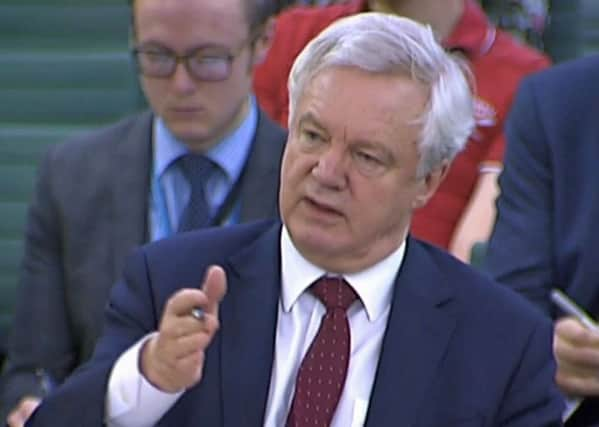Brexit: '˜Divorce Bill' and its impact explained


Some pushing for a ‘hard Brexit’ continued their favoured line of attack on the Government that the EU should have been told, in the words of Foreign Secretary Boris Johnson, to ‘go and whistle’.
Politicians and commentators of a Remain persuasion say that the final figure, mooted anywhere between 30 and 50 billion euros, as a sign of the poor bargaining ability of Brexit minister David Davis.
Advertisement
Hide AdAdvertisement
Hide AdWe look at how the agreement was reached, what the final bill could be, and what impact the accord could have on the Brexit negotiations.
No figure – yet
David Davis is already being targeted for social media ire after footage emerged from the summer of him dismissing the the €40bn as ‘nonsense’.
The word ‘bill’ might be a bit of a misnomer, but it was evident even before the referendum of last year that the UK would have to honour their financial obligations to the remaining 27 EU countries.
No figure was discussed in the build up to that vote to leave the EU, and there remains no clear figure today.
That is perhaps because there are many ways in which the bill could be settled – the UK has agreed to pay their current share into the EU until just beyond the country’s date of departure next – and because some of the money is funding specific projects that aren’t close enough to completion to determine their cost.
It is also apparent from the briefings coming from both sides that this wasn’t exactly a handshake deal on the actual figure itself – more an agreement on the formula that will be used to calculate the amount Britain pays.
That is just one reason why a precise figure is unlikely to be revealed until near the end of the negotiations next year – if it is at all.
Political manoeuvring
While the state of the public finances will be a key consideration in agreeing a deal, Theresa May and her ministers will be more acutely aware of any immediate political fallout of a high figure.
Advertisement
Hide AdAdvertisement
Hide AdAs the DUP can attest, money can usually be found when it is politically expedient to find it, but the higher the final bill, the more potential trouble for Mrs May.
That is probably why the current approach suits both parties, with an actual one-off, multi-billion pound payment unlikely to transpire any time soon.
Far more likely is a drip-fed approach to the UK’s financial obligations, which is a road also fraught with danger.
While it avoids the immediate fight with hard Brexiteers in the Prime Minister’s own party, it could see the UK making payments to the EU for years, perhaps even decades, longer than expected.
That is anathema to powerful outside agitators like Nigel Farage, many senior pro-Brexit politicians, and many millions of Leave voters.
The future
For now, both sides are keeping mum on the potential amount, and the potential length of time payments will be made for.
This might not have been the breakthrough that satisfied the EU and the UK Government entirely, though perhaps that is a sign that the deal reached is fair to both.
It means that the negotiations on matters that aren’t financial, for example the border issue in Ireland, and the rights of citizens, can begin in earnest.
Advertisement
Hide AdAdvertisement
Hide AdMrs May has managed to avoid an immediate clash with some of the more recalcitrant Brexiteers in her own Government, and the EU has a financial figure more in line with their thinking.
For now, the deal appears satisfactory to both sides, but it negotiations are about to arguably get even harder.
